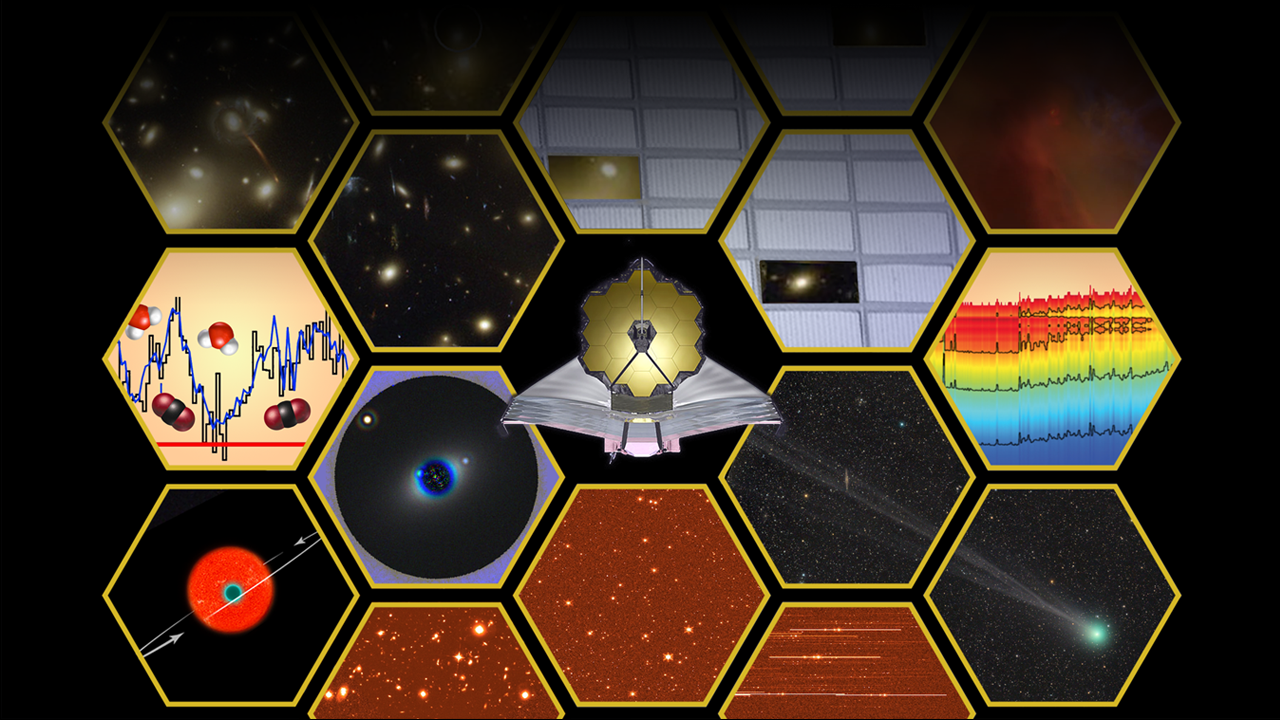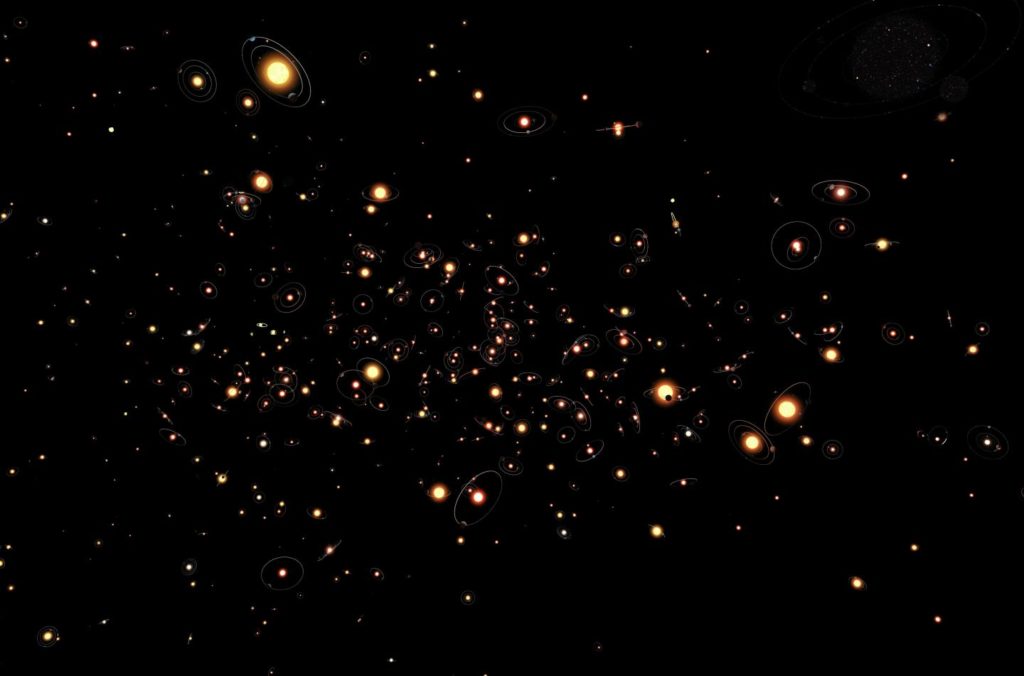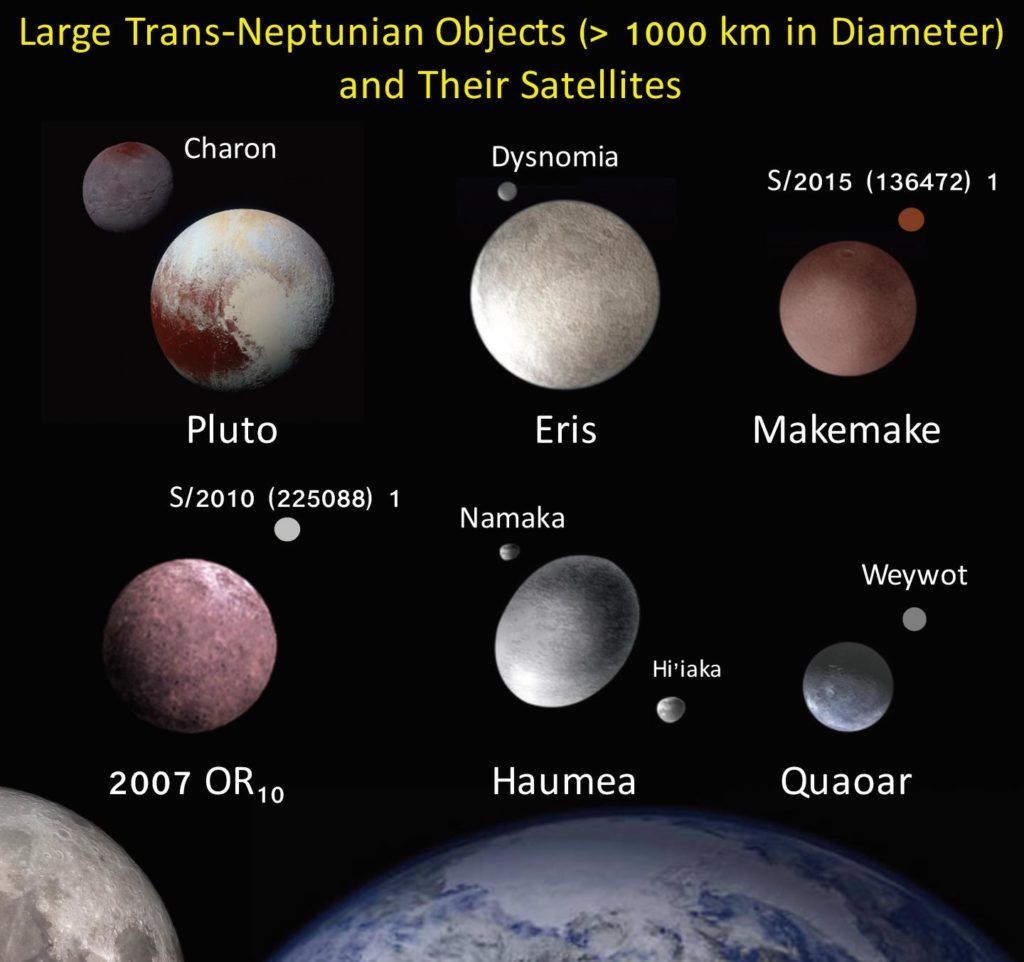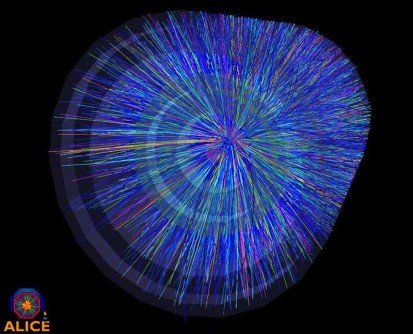Lava worlds, massive exoplanets home to sparkling skies and roiling volcanic seas called magma oceans, are distinctly unlike the planets in our solar system.
Tag: Space and Astronomy
Astronomers find that two exoplanets may be mostly water
Astronomers has found evidence that two exoplanets orbiting a red dwarf star are “water worlds,” planets where water makes up a large fraction of the volume.
Rapid-fire fast radio burst shows hot space between galaxies
A recently discovered, rare and persistent rapid-fire fast radio burst source – sending out an occasional and informative cosmic ping from more than 3.5 billion light years away – helps to reveal the secrets of the broiling hot space between the galaxies. That’s according to an international team of astronomers who published their findings in the journal Nature.
Mapping the Universe’s Earliest Structures with COSMOS-Webb
Peering deeply into a huge patch of sky the size of three full Moons, NASA’s James Webb Space Telescope will undertake an ambitious program to study half a million galaxies. Called COSMOS-Webb, this survey is the largest project Webb will undertake during its first year. With more than 200 hours of observing time, it will build upon previous discoveries to make advances in three particular areas of study. These include revolutionizing our understanding of the Reionization Era; looking for early, fully evolved galaxies; and learning how dark matter evolved with galaxies’ stellar content. With its rapid public release of the data, this survey will be a primary legacy dataset from Webb for scientists worldwide studying galaxies beyond the Milky Way.
Space Scientists Reveal Secret Behind Jupiter’s ‘Energy Crisis’
New research published in Nature has revealed the solution to Jupiter’s ‘energy crisis’, which has puzzled astronomers for decades.
Ground System for NASA’s Roman Space Telescope Moves into Development
NASA’s Nancy Grace Roman Space Telescope has just successfully completed the critical design review of the mission’s ground systems, which are spread over multiple institutions including the Space Telescope Science Institute in Baltimore, Maryland. This means the plan for science operations has met all of the design, schedule, and budget requirements. The mission will now proceed to the next phase: building and testing the newly designed systems that will enable planning and scheduling of Roman observations and managing the resulting data.
CHIME telescope and collaborative efforts from WVU lead to the detection of more than 500 fast radio bursts
With the help of the radio telescope located at the Dominion Radio Astrophysical Observatory, operated by the National Research Council of Canada, in British Columbia, Canada, the telescope has nearly quadrupled the number of FRB discovered to date.
Expert in Industry of Outer Space, Greg Autry Joins Thunderbird School of Global Management at ASU
Press Release Announcement: Space-Sector Expert Joins ASU Thunderbird

NASA’s James Webb Space Telescope General Observer Scientific Programs Selected
Mission officials for NASA’s James Webb Space Telescope have announced the selection of the General Observer programs for the telescope’s first year, known as Cycle 1. The 286 selected proposals address a wide variety of science areas, such as seeking to find the first galaxies, exploring the formation of stars, and measuring physical and chemical properties of planetary systems, including our own solar system.
The selection process, conducted by the Telescope Allocation Committee comprised of nearly 200 members of the worldwide astronomical community, spanned several weeks.
Algorithm designed to map universe, solve mysteries
ITHACA, N.Y. – Cornell University researchers have developed an algorithm designed to visualize models of the universe in order to solve some of physics’ greatest mysteries. The algorithm was developed by applying scientific principles used to create models for understanding…

Star tours
Astronomy bot speeds up search for Jupiter’s twins Astronomers have a new tool in their search for extraterrestrial life – a sophisticated bot that helps identify stars hosting planets similar to Jupiter and Saturn. These giant planets’ faraway twins may…

study shows how icy outer solar system satellites may have formed
Scientists use sophisticated computer simulations and observations of trans-Neptunian objects to understand the formation of the solar system Using sophisticated computer simulations and observations, a team led by researchers from the Earth-Life Science Institute (ELSI) at Tokyo Institute of Technology…
Rockets gather radio data to study atmosphere disturbances
ITHACA, N.Y. – Two NASA sounding rockets were sent to the edges of the atmosphere above the Marshall Islands on June 19 in order to study communication disruption in the upper atmosphere. The rockets deployed two tracers to gather information…

Explaining Light-Nuclei Production in Heavy-Ion Nuclear Collisions
Pairs of sub-atomic particles may catalyze reactions that happened moments after the Big Bang. The Science Nuclear physicists smash ions together to create and study the soup of quarks and gluons thought to fill the universe milliseconds after the Big…

‘Bathtub rings’ around Titan’s lakes might be made of alien crystals
New research presented at the 2019 Astrobiology Science Conference in Bellevue, Wa. BELLEVUE, WA –The frigid lakeshores of Saturn’s moon Titan might be encrusted with strange, unearthly minerals, according to new research being presented here. Scientists re-creating Titan-esque conditions in…